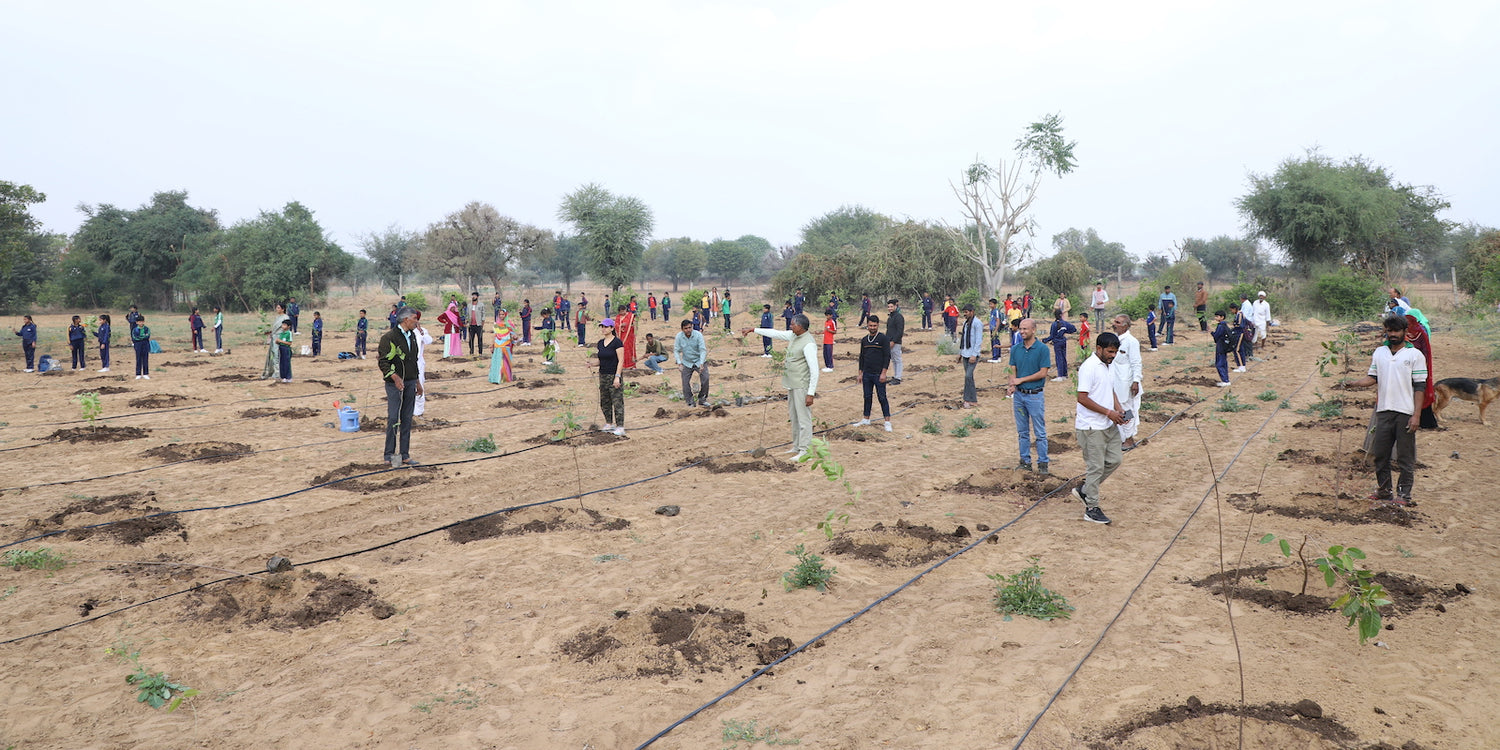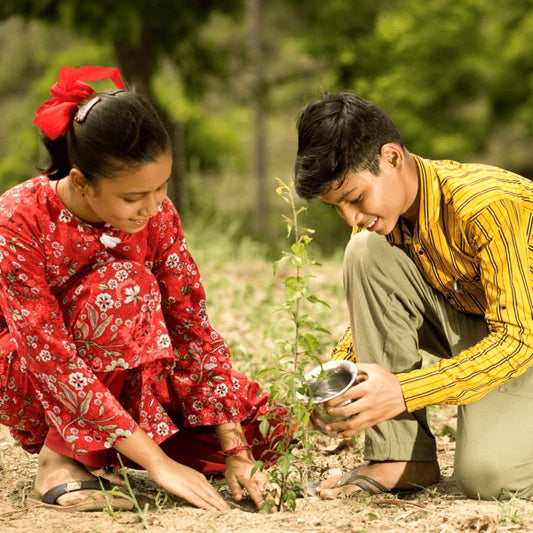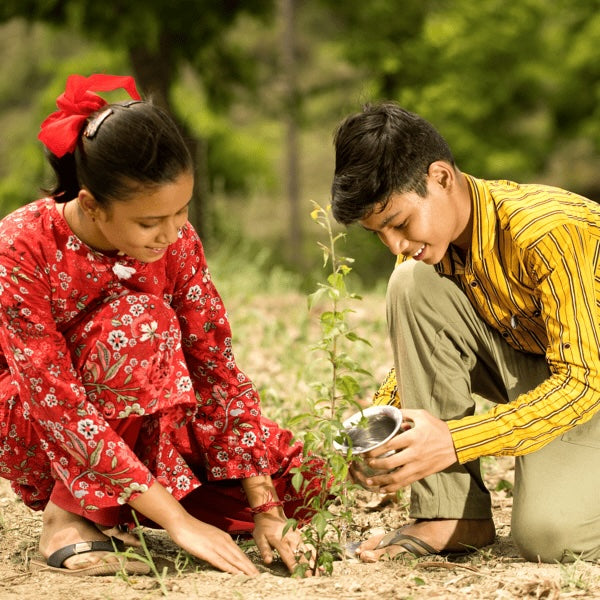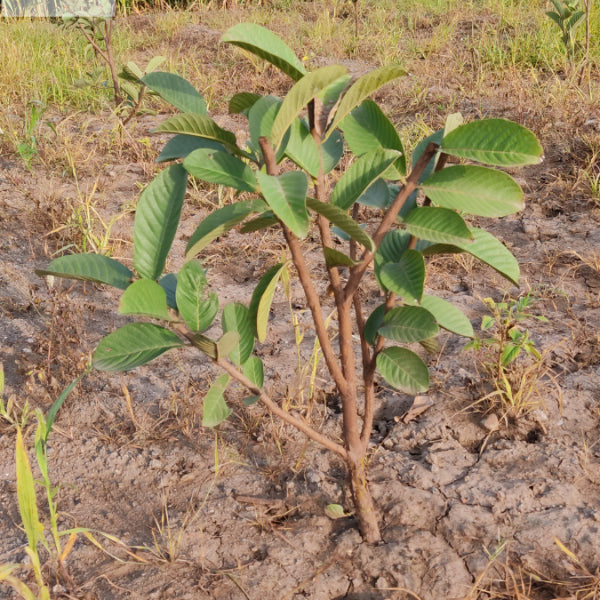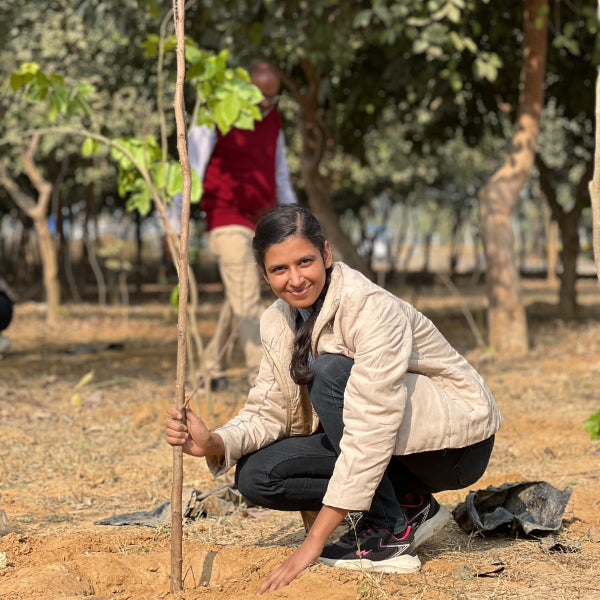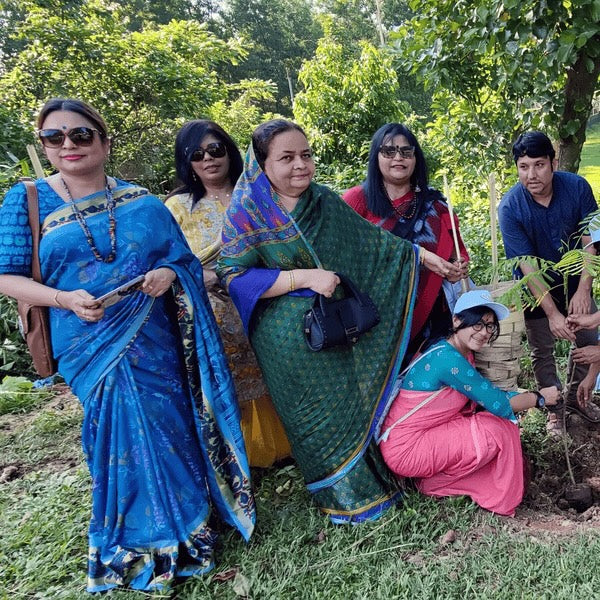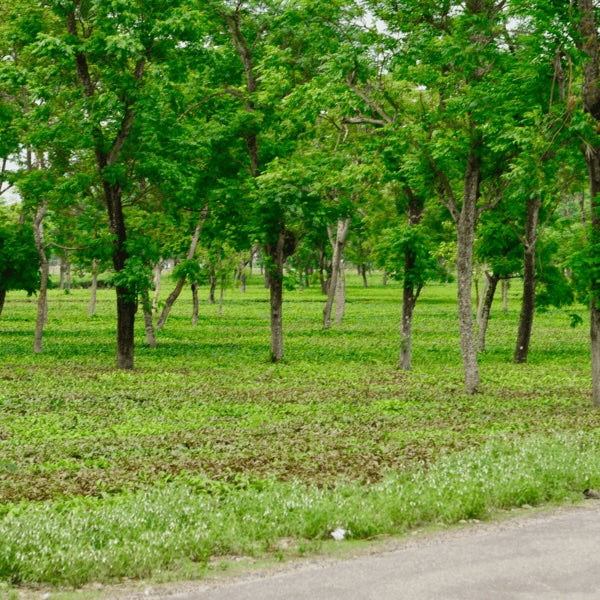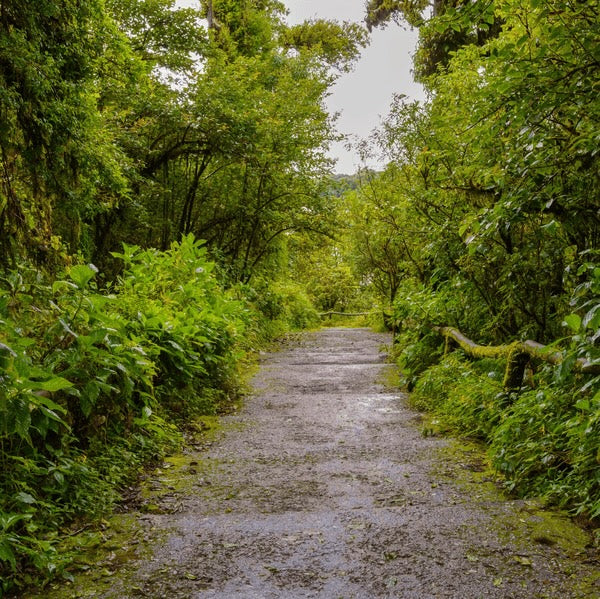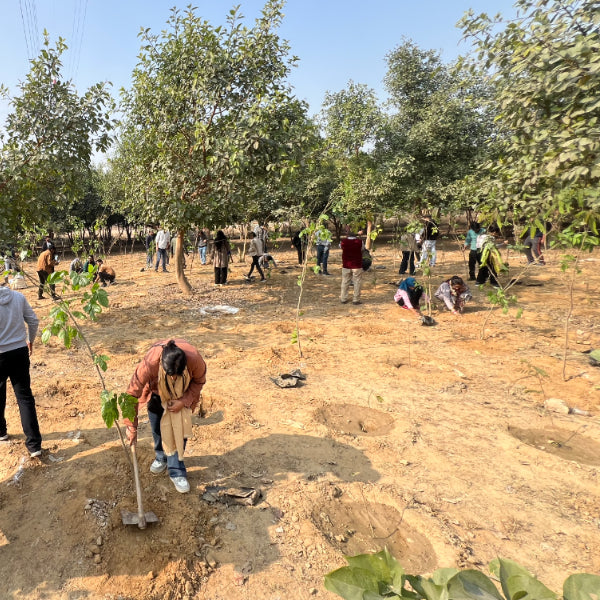Agroforestry in Haryana: Building Green Belts
Agroforestry in Haryana is not just a farming technique; it’s a revolutionary approach to sustainable agriculture. 🌱 By integrating trees and shrubs i Read more
Connect with us
-
👥 Corporates
If you are looking for:
- 🌲 Tree Plantation Events
- 📊 CSR Projects
📧 corporate@growbilliontrees.com
📞 +91 9699723523
💬 +91 9325931304 WhatsApp (Only)
🕒 Mon - Sat | 10am - 7pm IST
-
🧩 Tree Plantation NGOs
If you are looking for:
- 💰 Financial Assistance
- 🤝 Operational Support
📧 support@growbilliontrees.com
📞 +91 9699723523
💬 +91 9325931304 WhatsApp (Only)
🕒 Mon - Sat | 10am - 7pm IST
-
🌼 Individuals
If you are looking for:
- 👥 Group Tree Plantation Drive
- 🌳 Bulk Tree Plantation
📞 +91 9699723523
💬 +91 9325931304 WhatsApp (Only)
🕒 Mon - Sat | 10am - 7pm IST
Trending
Trees for Corporates
Agroforestry in Haryana: Building Green Belts
Agroforestry in Haryana is not just a farming technique; it’s a revolutionary approach to sustainable agriculture. 🌱 By integrating trees and shrubs into agricultural landscapes, farmers can enhance biodiversity, improve soil health, and increase crop yields.
Haryana, known for its rich agricultural heritage, is embracing agroforestry to combat environmental challenges. With rapid urbanization and climate change, traditional farming practices are under threat. Agroforestry offers a solution that harmonizes agriculture with nature. 🌳
Historically, Haryana has been a major contributor to India's food security. However, the over-reliance on monoculture has led to soil degradation and water scarcity. Agroforestry can reverse these trends by promoting diverse cropping systems. 🌾
Scientific studies show that agroforestry systems can increase crop productivity by 20-60%. This is achieved through improved soil structure, enhanced nutrient cycling, and better water retention. 🌊
One of the most significant benefits of agroforestry is its ability to sequester carbon. Trees absorb CO2, helping to mitigate climate change. In Haryana, implementing agroforestry can significantly reduce the carbon footprint of agriculture. 🌍
Moreover, agroforestry systems provide additional income sources for farmers. By growing fruit trees, timber, and medicinal plants alongside traditional crops, farmers can diversify their income streams. 💰
Fun fact: A single mature tree can absorb approximately 48 pounds of CO2 per year! Imagine the impact of planting millions of trees across Haryana! 🌳
Building green belts through agroforestry not only enhances the landscape but also creates habitats for wildlife. This biodiversity is crucial for maintaining ecological balance and supporting pollinators, which are vital for crop production. 🐝
In Haryana, initiatives are underway to promote agroforestry. The government is providing incentives for farmers to adopt this sustainable practice. Training programs and workshops are being organized to educate farmers about the benefits of agroforestry. 📚
One organization leading the charge in this movement is Grow Billion Trees. 🌱 Their mission is to plant a billion trees across India, and they are actively working in Haryana to implement agroforestry projects.
Grow Billion Trees focuses on community engagement, ensuring that local farmers are involved in the planning and execution of agroforestry projects. This participatory approach fosters a sense of ownership and responsibility among farmers. 🤝
The organization collaborates with local governments and NGOs to provide resources and support for agroforestry initiatives. They offer technical assistance, seeds, and training to help farmers successfully integrate trees into their farming systems. 🌿
Through their efforts, Grow Billion Trees aims to create a network of green belts across Haryana. These green belts will not only enhance agricultural productivity but also improve air quality and combat urban heat. 🌞
In addition to environmental benefits, agroforestry can also improve the socio-economic conditions of rural communities. By diversifying income sources, farmers can achieve greater financial stability and resilience against market fluctuations. 💪
Agroforestry also plays a crucial role in water conservation. The deep roots of trees help retain moisture in the soil, reducing the need for irrigation. This is particularly important in Haryana, where water scarcity is a pressing issue. 💧
As we look to the future, the potential of agroforestry in Haryana is immense. With the right support and commitment, we can transform the agricultural landscape into a sustainable and productive ecosystem. 🌍
Grow Billion Trees is not just planting trees; they are planting hope for future generations. Their vision aligns with global sustainability goals, making a significant impact on climate change mitigation. 🌱
In conclusion, agroforestry in Haryana is a beacon of hope for sustainable agriculture. By building green belts and promoting biodiversity, we can create a healthier environment for all. 🌳
Join the movement! Support agroforestry initiatives and be a part of the solution. Together, we can grow a greener future for Haryana and beyond! 🌿
Agroforestry Practices in Haryana
When it comes to agroforestry in Haryana, think of it as a matchmaking service for trees and crops. This dynamic duo not only enhances biodiversity but also boosts soil health. Farmers are now planting trees alongside their crops, creating a green tapestry that’s both beautiful and functional. Imagine walking through fields where mango trees flirt with wheat, all while improving the ecosystem. It’s like a farmer’s version of a reality show, where everyone wins!
Sustainable Farming Techniques
Sustainable farming techniques are the bread and butter of agroforestry. In Haryana, farmers are adopting practices that not only yield crops but also protect the environment. By integrating trees into their farming systems, they’re reducing soil erosion and improving water retention. It’s like giving Mother Nature a high-five while still bringing home the bacon. Who knew that being eco-friendly could also be profitable?
Soil Health Improvement
Soil health improvement is the unsung hero of agroforestry. In Haryana, the introduction of trees into farming systems is akin to sending the soil to a spa day. With increased organic matter and better nutrient cycling, the soil becomes a powerhouse of fertility. Farmers are witnessing a transformation that’s as dramatic as a makeover show, with their fields flourishing like never before. Healthy soil means healthy crops, and that’s a win-win!
Biodiversity Enhancement
Biodiversity enhancement is the secret sauce of agroforestry. In Haryana, the integration of various plant species creates a mini-ecosystem that attracts beneficial insects and wildlife. It’s like hosting a party where everyone is invited, and the more, the merrier! This diversity not only helps in pest control but also ensures that the crops are resilient to diseases. Who knew that a little variety could spice up the agricultural scene?
Climate Resilience
Climate resilience is the superhero cape that agroforestry wears in Haryana. With changing weather patterns, farmers are turning to trees to shield their crops from extreme conditions. These green giants act as windbreaks and shade providers, making the fields more adaptable to climate change. It’s like having a trusty umbrella on a rainy day—always there to save the crops from the elements.
Economic Benefits of Agroforestry
The economic benefits of agroforestry are as appealing as a sale at your favorite store. In Haryana, farmers are discovering that planting trees alongside crops can lead to increased income. Not only do they harvest fruits and timber, but they also enjoy higher yields from their crops. It’s like having your cake and eating it too, with the added bonus of a healthier planet.
Community Engagement in Agroforestry
Community engagement in agroforestry is where the magic happens. In Haryana, farmers are coming together to share knowledge and resources, creating a network of green warriors. Workshops and training sessions are popping up like mushrooms after rain, fostering a sense of camaraderie. It’s a community effort that not only strengthens bonds but also enhances the overall success of agroforestry initiatives.
Policy Support for Agroforestry
Policy support for agroforestry is the wind beneath its wings in Haryana. Government initiatives are paving the way for farmers to adopt these sustainable practices. With subsidies and incentives, the transition to agroforestry is becoming smoother than a well-oiled machine. It’s like having a cheerleader in the background, encouraging farmers to embrace greener methods while ensuring a sustainable future.
You may like
Corporate Plantations
FAQ
What is agroforestry and why is it important in Haryana?
Agroforestry is the practice of integrating trees and shrubs into agricultural landscapes, enhancing biodiversity and sustainability. In Haryana, where agriculture is the backbone of the economy, agroforestry plays a crucial role in improving soil health, increasing crop yields, and providing additional income sources for farmers. By building green belts, we not only combat climate change but also create a harmonious ecosystem that benefits both nature and agriculture.
How does Grow Billion Trees contribute to agroforestry in Haryana?
At Grow Billion Trees, we’re on a mission to plant a billion trees, and we believe agroforestry is the way to go! We provide farmers with the resources, knowledge, and saplings needed to create thriving green belts. Our approach ensures that farmers can enjoy the fruits of their labor—literally—while contributing to a greener planet.
What types of trees are best for agroforestry in Haryana?
In Haryana, we recommend native species like Neem, Peepal, and Amla, which are well-suited to the local climate and soil conditions. These trees not only enhance biodiversity but also provide shade, improve soil fertility, and offer fruits and medicinal benefits. Plus, they’re like the Swiss Army knives of the plant world—versatile and incredibly useful!
How can farmers get involved in agroforestry initiatives?
Getting involved is as easy as pie! Farmers can reach out to Grow Billion Trees for guidance on selecting the right trees, planting techniques, and maintenance practices. We offer workshops and resources to ensure that every farmer can become an agroforestry champion. Together, we can turn Haryana into a lush green paradise!
What are the economic benefits of agroforestry for farmers?
How does agroforestry help in combating climate change?
Agroforestry acts as a carbon sink, absorbing CO2 from the atmosphere and helping to mitigate climate change. By planting trees in agricultural landscapes, we enhance carbon sequestration while improving soil health and water retention. It’s a win-win situation—saving the planet while growing delicious crops!
What role do green belts play in urban areas of Haryana?
Green belts in urban areas serve as lungs for the city, improving air quality and providing recreational spaces for residents. They also help in reducing urban heat and managing stormwater. At Grow Billion Trees, we believe that every city needs its green superheroes, and green belts are just that!
How can individuals support agroforestry initiatives in Haryana?
Individuals can support agroforestry by volunteering with Grow Billion Trees, donating to tree-planting initiatives, or simply spreading the word about the importance of green belts. Every little effort counts, and together, we can create a greener, healthier Haryana. Let’s make tree-hugging a trend!


